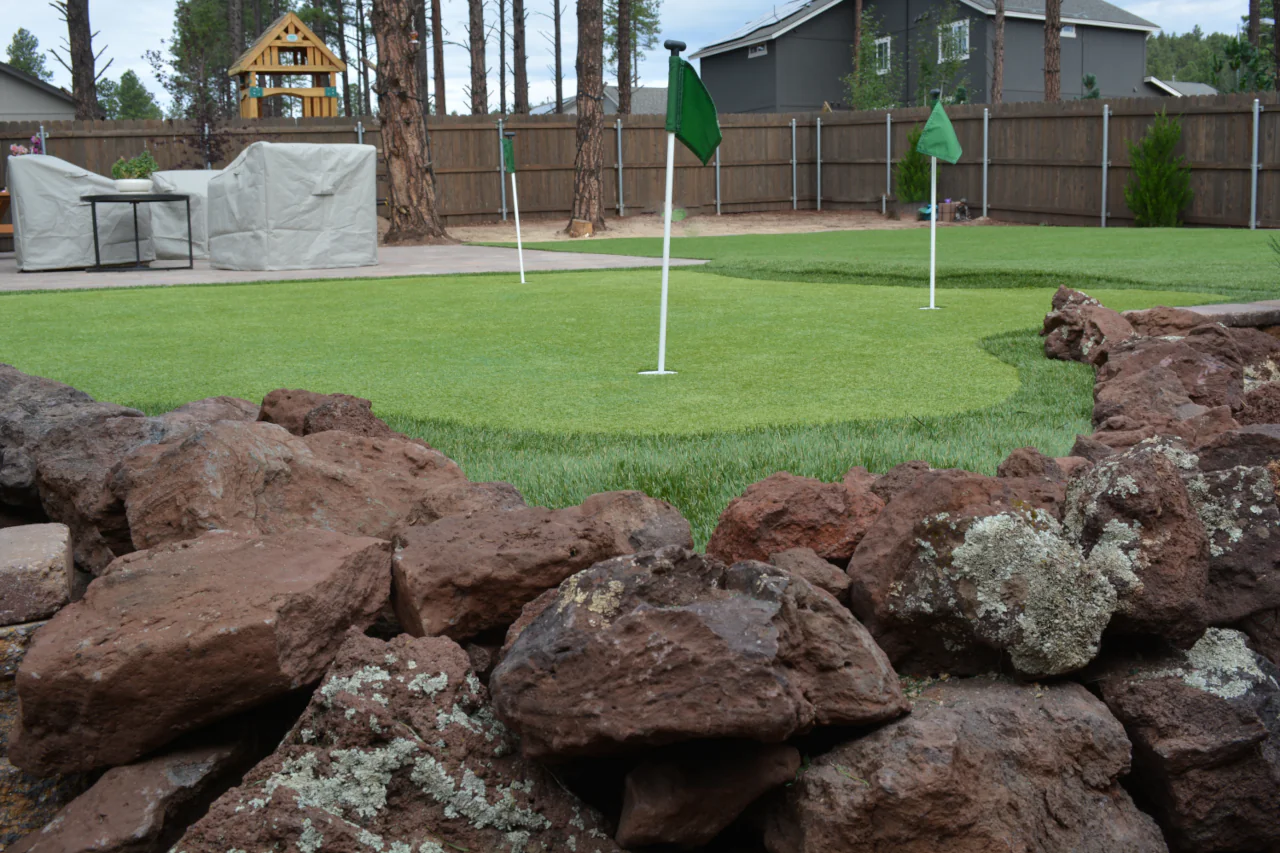How to Design a Three-Hole Practice Green

A three-hole practice green gives you a small-space-friendly way to sharpen your short game without consuming all your outdoor space. This guide explains a well-designed layout, easy pin placement ideas, which types of turf work best for a backyard putting green setup, and bite-sized practice routines. Sprinkle in a bit of imagination and a steady routine, and you’ll be getting more confident strokes in no time.
CHOOSING THE RIGHT SIZE AND SHAPE FOR YOUR YARD
Start by finding a flat or softly sloping spot that doesn’t conflict with walkways or landscaping. A typical three-hole green can fit in 300–700 sq. ft., depending on how much spacing you want between the holes. Think of three zones that create interesting angles: a short straight putt, a mid-range putt over a shallow slope, and a long putt with noticeable break.
If you opt for a full synthetic grass installation, pick a spot with strong sun and consider how the drainage will work there. Proper base work keeps the surface uniform and helps the turf perform like a real putting surface. If you’re building in a smaller area, offset the holes so each one feels different without needing much extra material.
LAYOUT TIPS FOR BETTER PRACTICE
Vary distances: aim for one short (6–10 ft.), one medium-distance putt (12–18 ft.), and one long-range hole (20–35 ft.). That range forces different putting speeds and precision.
Use subtle contours: small mounds or gentle hollows add challenge without requiring major earthwork.
Create approach area options: include a small chipping zone beside one hole so you can practice pitch-and-putt shots.
Edge details: a low-profile roll-up edge or sand trap adds style and gameplay challenges.
Throughout the layout process, share your preferred installation style — whether you want a full synthetic turf base or a hybrid renovation — because turf varieties act differently depending on prep work.
KEEPING PRACTICE FRESH WITH PIN PLACEMENT
Rotate pin locations every session. Move pins forward, back, and to the sides to create new read lines. A simple system: A-B-C rotation where A = front-third, B = mid-green, C = rear. For extra challenge, place a temporary pin on the side of a gentle slope to improve slope reading.
Use removable cups or movable pin sets so you can swap pin positions without damaging the turf. Changing pins on synthetic turf putting greens is easy and lets you simulate tournament challenges in a Naperville backyard setting.
SHORT PRACTICE ROUTINES FOR BUSY LIVES
No need for hour-long sessions. Try three simple drills that pair with your three-hole design:
Speed Ladder (6–12 minutes): Start at the short hole and putt three balls from each range—short, mid, long—focusing on a consistent stroke length for each distance.
Break Read Drill (8–12 minutes): From a fixed spot, putt to each of the three holes with the pin in a different spot. Work on judging the break and adjusting pace.
Pressure Finish (5–8 minutes): Make two-putt cycles around the three holes. If you two-putt all three, reward yourself with a harder approach next round.
Short routines like these keep progress steady and make practice easy to maintain. Mix them over several days for full-scope training.
